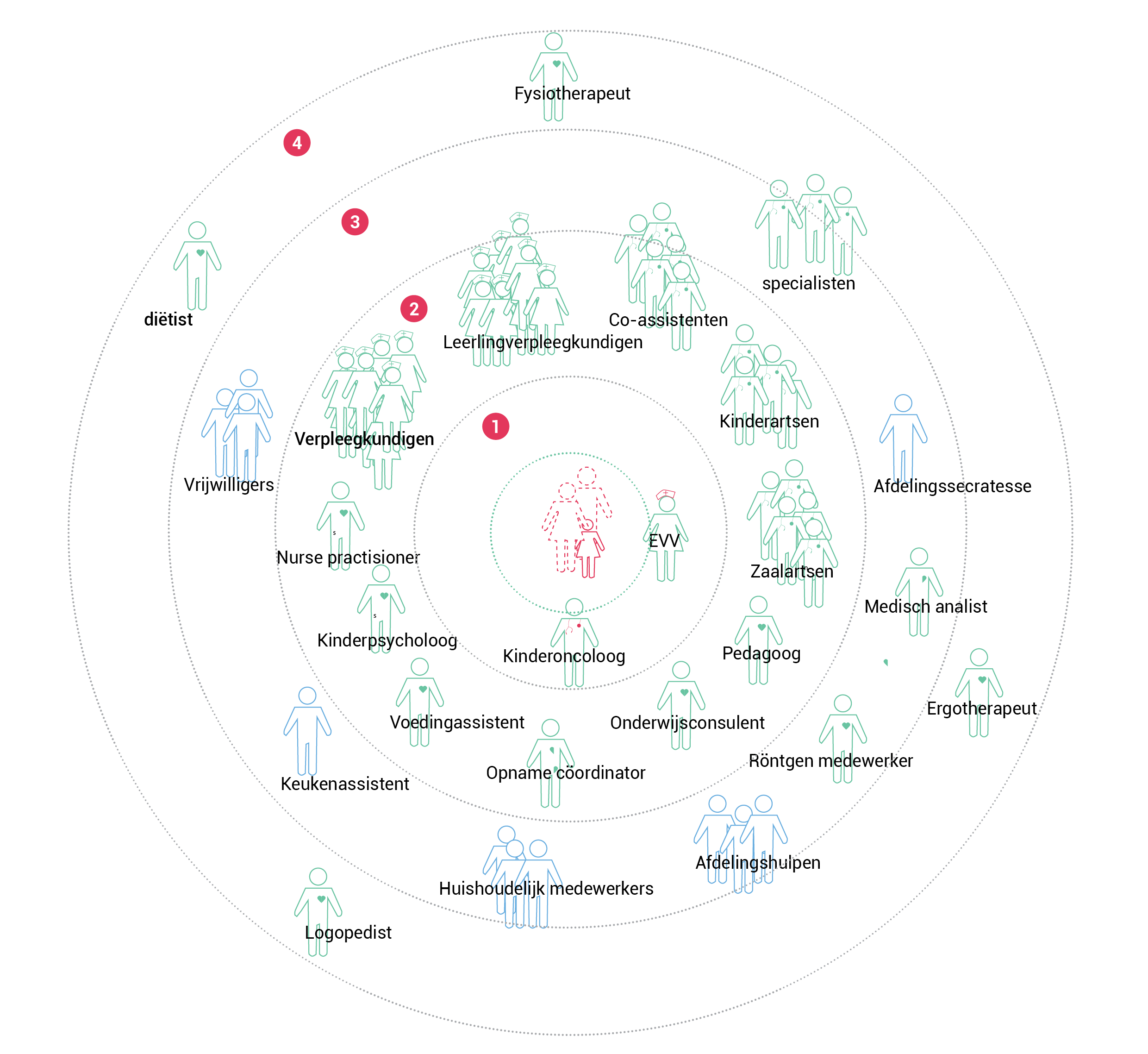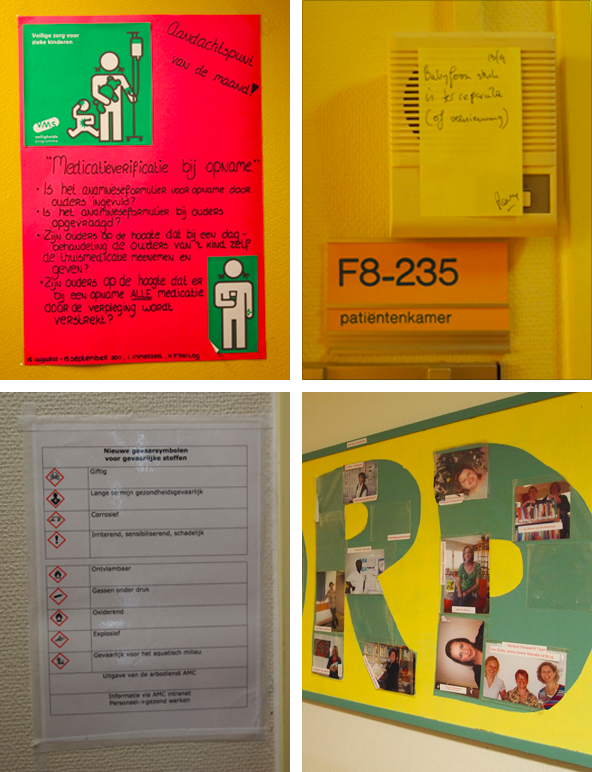Pediatric Oncology Center • Research graduation project • 2012
Improve information exchange at Child Oncology Centre
Project
A research project for the future pediatric oncology centre in the Netherlands. The research was aimed at finding out what the current problems are and how to improve information exchange for parents whose child suffer from cancer. Although it is the child that's ill, it is the parents who are in great need for reliable and up-to-date information.
My role
Although a few years ago, I often think back to this project because it was one that I particularly enjoyed due to it requiring not only a need to design for a healthcare environment, but also ensuring a deep understanding of the user’s needs. Elements in this design project ranged from focus group sessions with parents, interviewing pediatric nurses to shadowing a pediatrician. A big part of the end result was translating the most important insights into easy to understand infographics and user flow diagrams.
A few research insights...
1. Do you know who to ask?
Many different caretakers and temporary medical students are involved during treatment of child cancer and most of the caretakers look very similar. So who to ask if you have a question? It turns out that it’s very hard to find the right information or person. This infographic gives an overview of all the caretakers that are involved during the treatment of child cancer.

1st row
Caretakers that are responsible for the treatment, which are the pediatrician and nurses.
2nd row
caretakers are the ones parents see everyday; nurses, dietist, teachers and student physicians at the ward.
3rd row
Non-medical and paramedical staff working on the department. Volunteers, medical secretary, kitchen staff etc.
4th row
Every type of cancer need a different treatment and this row represent these specific caretakers. This could be speech therapist for example.
2. You have to understand medical language
Even a well prepared one-to-one conversation with the pediatrician can be difficult to understand for parents. I had the opportunity to attend a conversation between parents and their pediatrician. This was their second meeting, the day after their child was diagnosed with cancer. During the conversation the pediatrician does a good job explaining the information about the treatment but due to being unfamiliar with medical terminology, the amount of information, together with an chaotic treatment plan on paper, makes it hard for parents to understand and remember. I made this visualization of the conversation.

Old information (told the day before)
New information
Repeat and summarize information
Stimulate asking questions
3. Adapt to your new home
During research I noticed that parents have difficulties to understand the difference between examination and treatment. Next to the new medical language they slowly become familiar with, the hospital becomes their second home and it is important that they understand how it works. I made a visualisation of the different routes in the hospital for parents to make it easier to understand and navigate this ‘new home’.

Non-medical (mostly for entertainment)
Examination
Treatment
4. Information is everywhere
During treatment, medical information about the child is stored in different electronic systems and paper documents, depending on the discipline or hospital. These systems are not user friendly, sometimes due to the usage by employees, sometimes due to the design of the system, but often due to a combination of these aspects. Bottlenecks are solved by employees in their own way and they see these problems as a ‘fact of life’. It’s something they don’t really think about. The chaotic day-to-day structure and all the meetings don’t contribute to transferring information to parents in a good and clear way. On top of that; at the hospital notes are everywhere and easy to miss.

Conclusion
The best way to provide information is to give the parents easy to understand information at the right place at the right time. This is not happening at the moment. To cope with the situation, parents start looking on the internet for information. Instead of getting more grip on the situation this can make it even worse because the information they find on the internet isn’t quite reliable. The main focus of this project was research, but I also made a list of recommendations and a proposal for a web app. Please contact me if you would like to know more.
